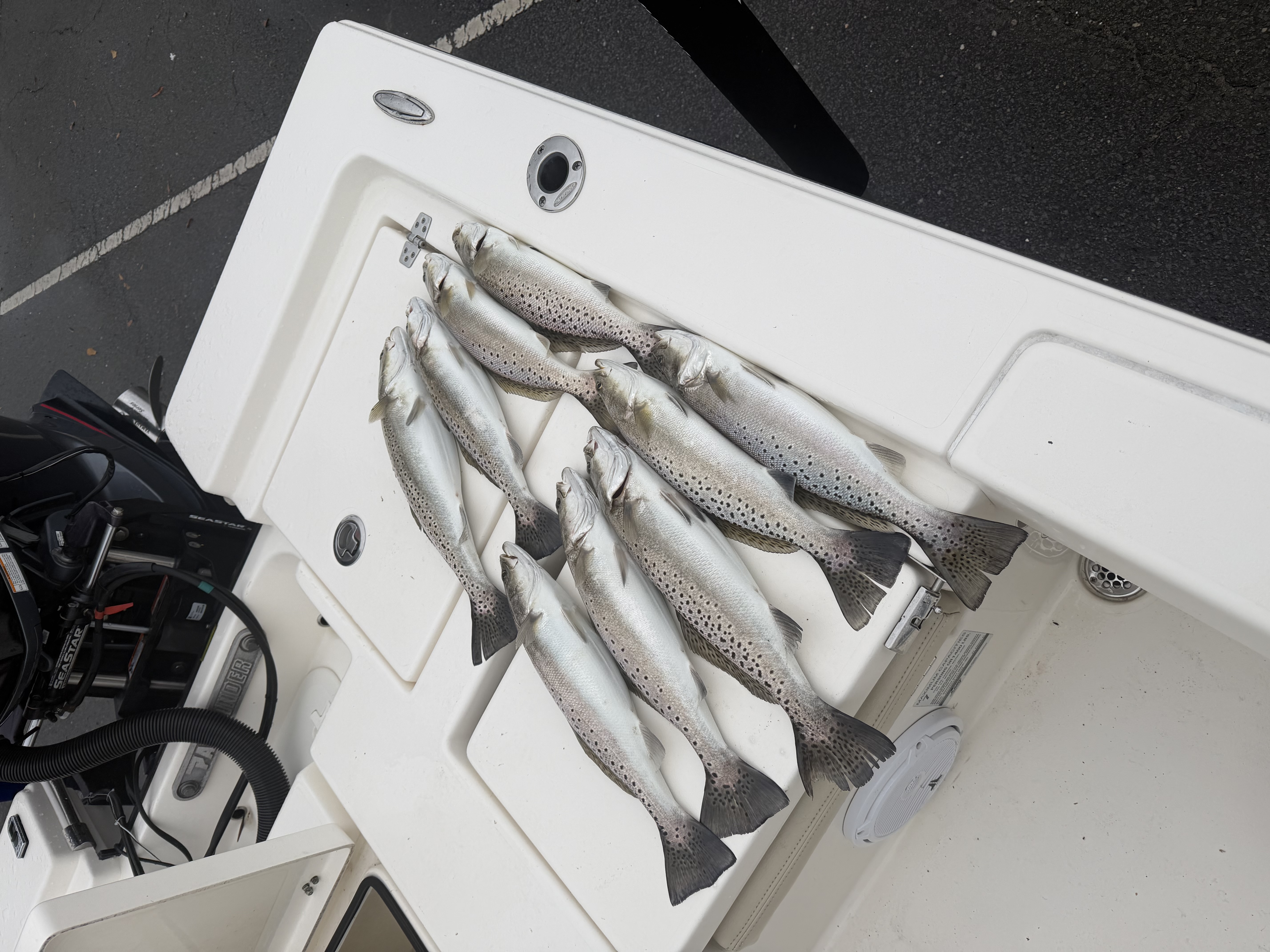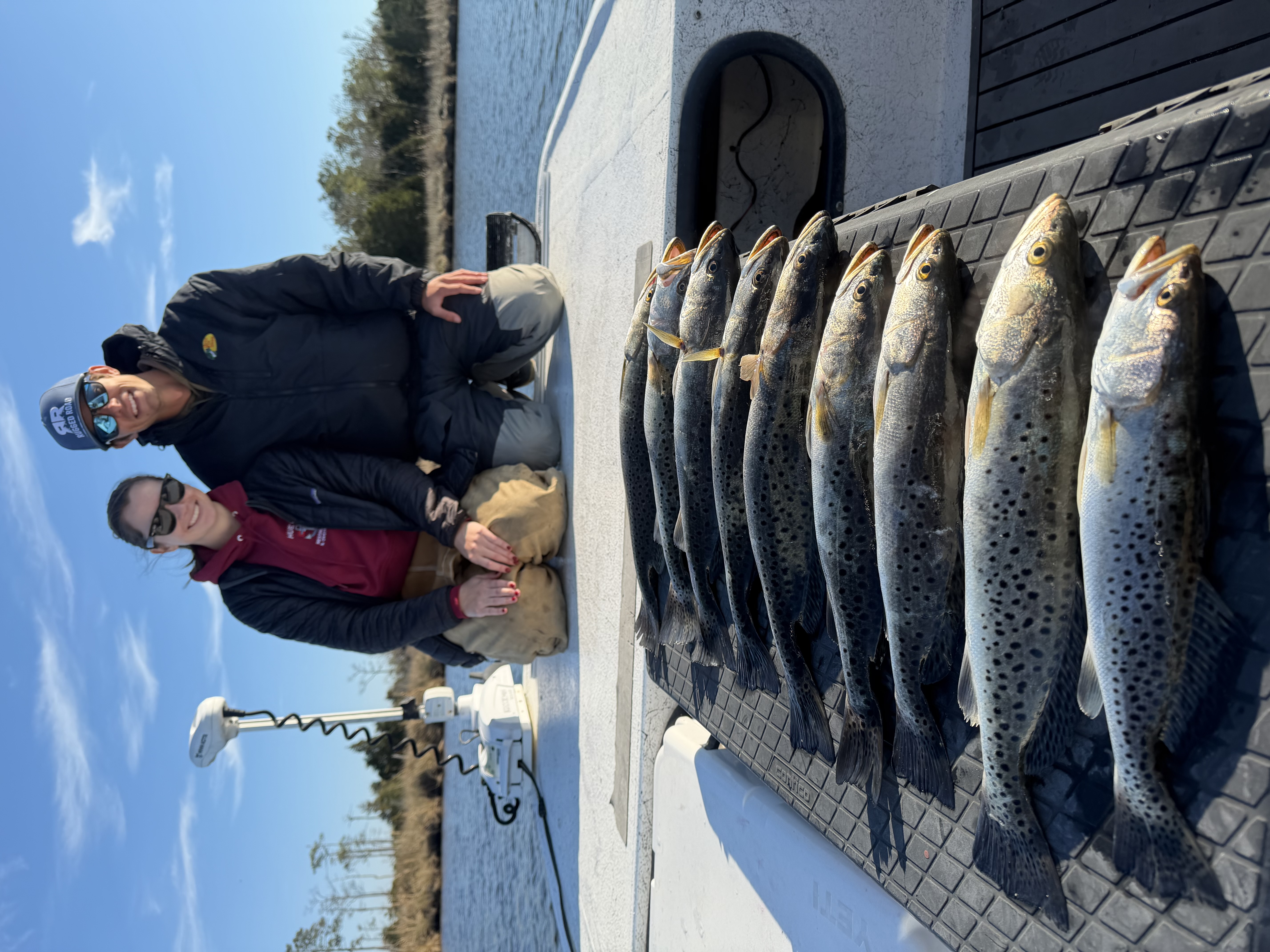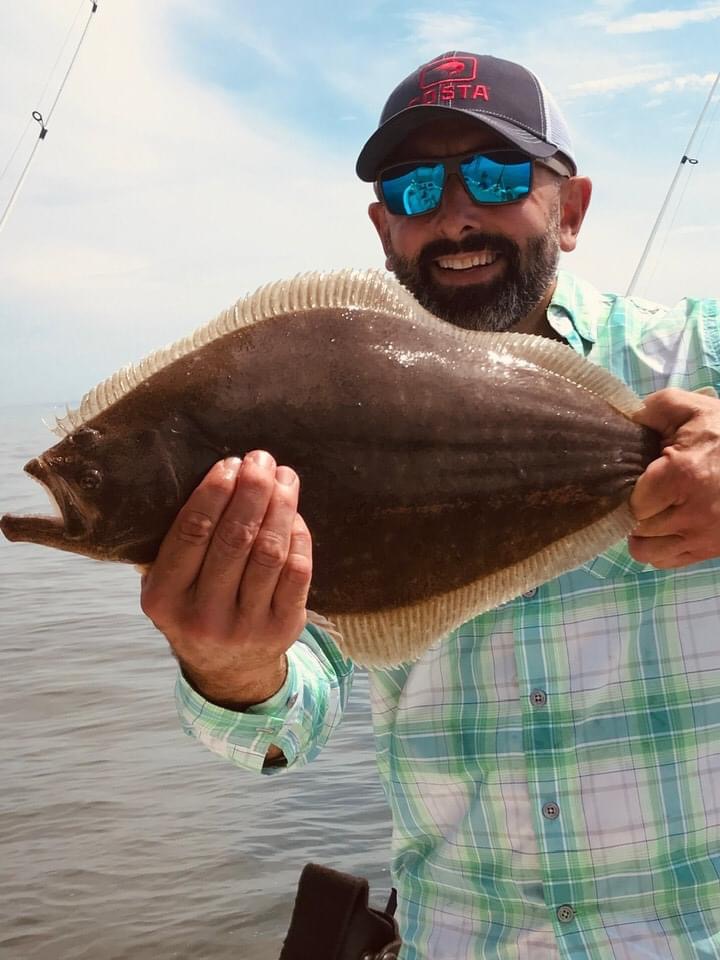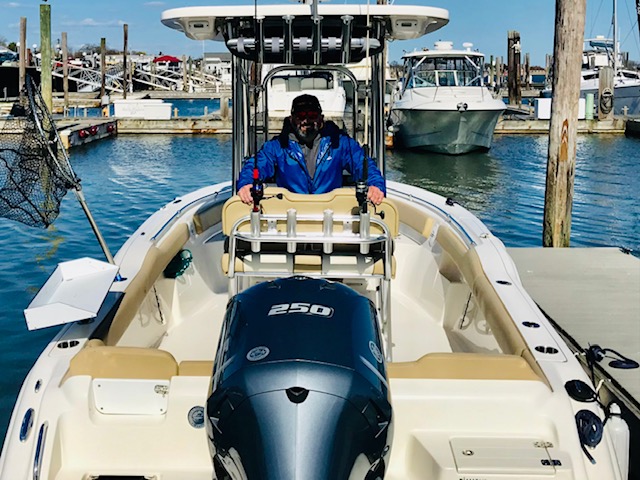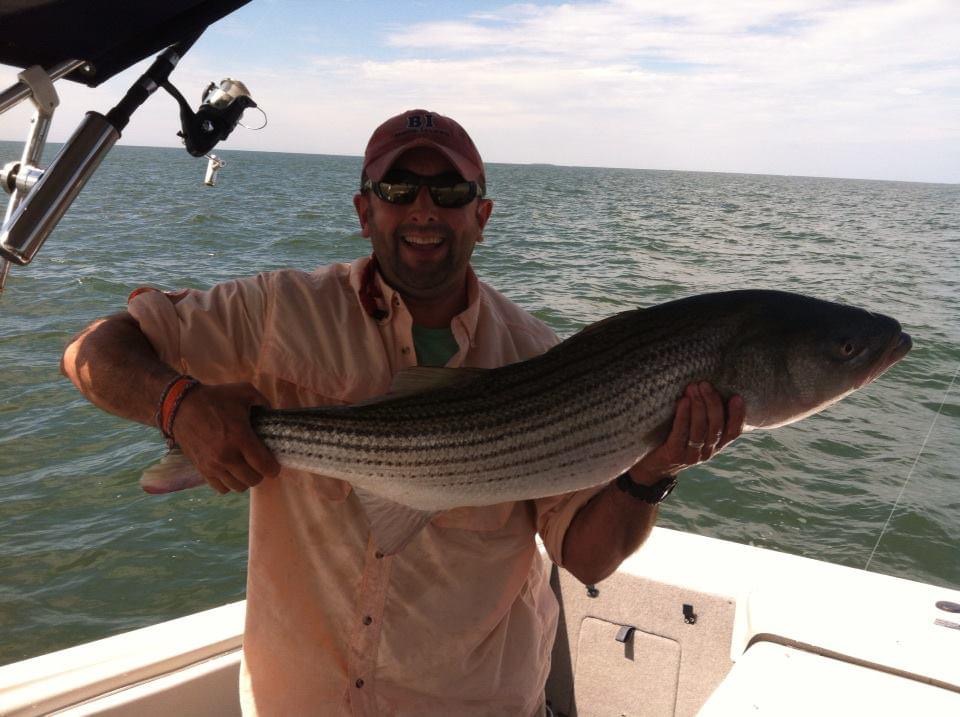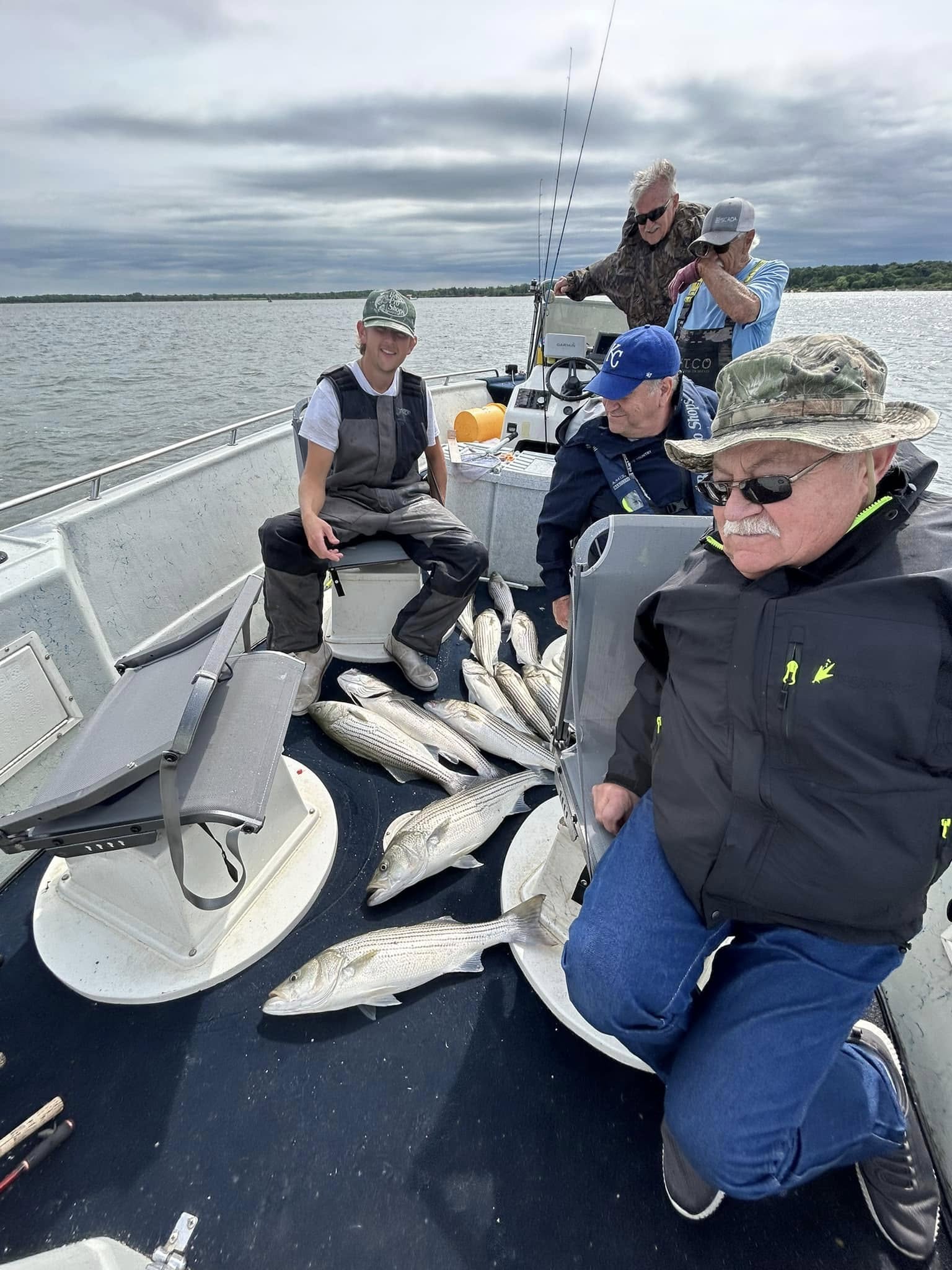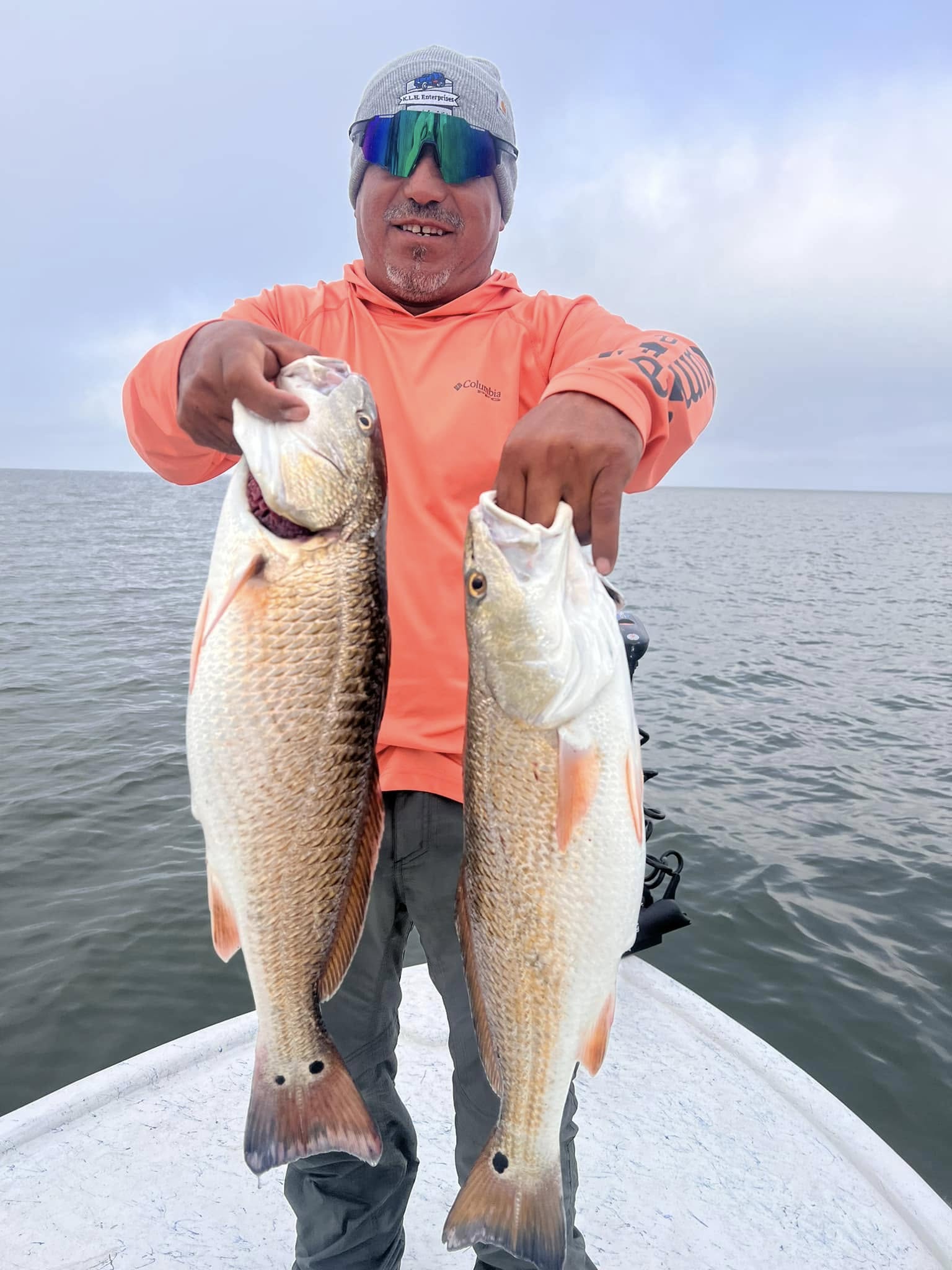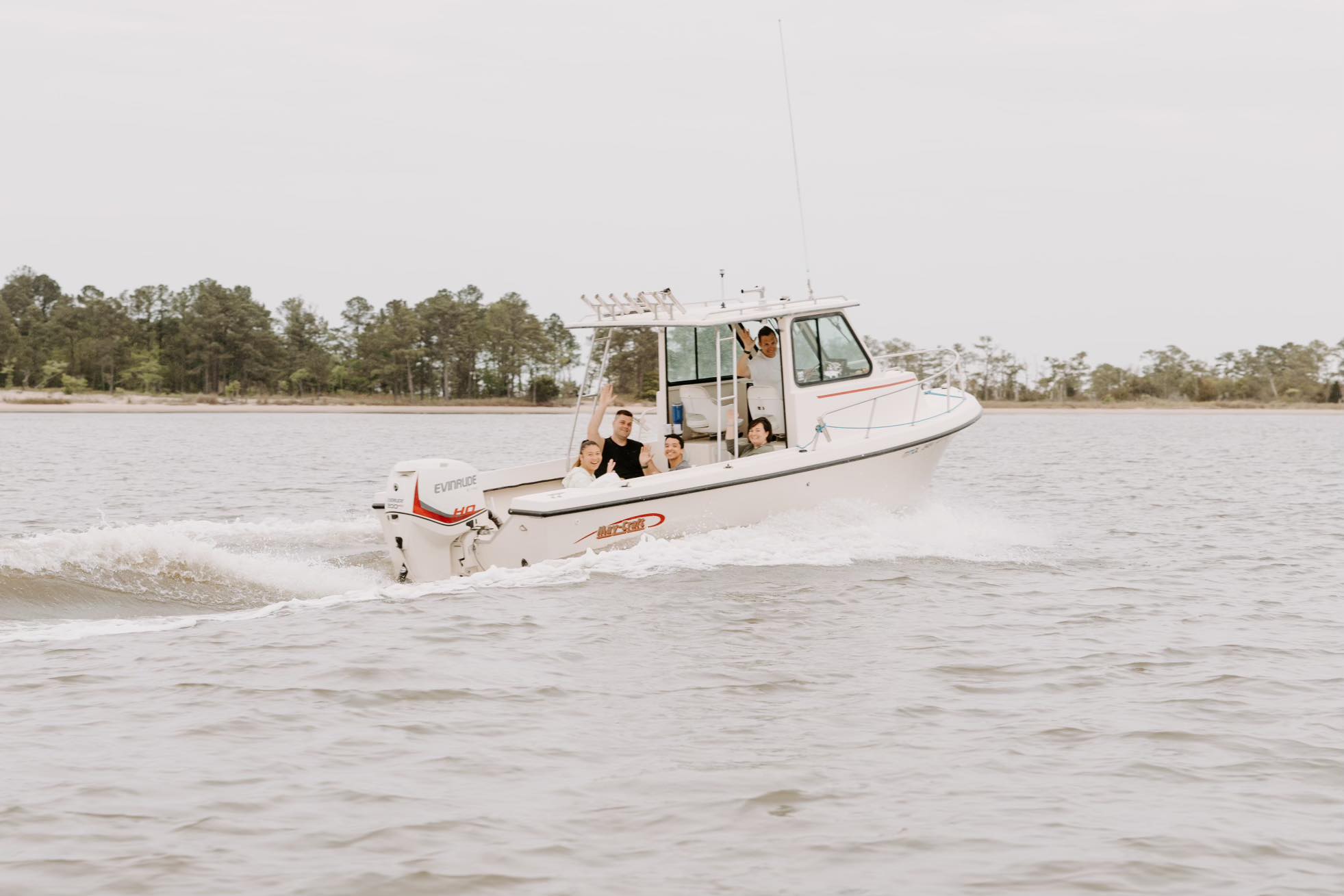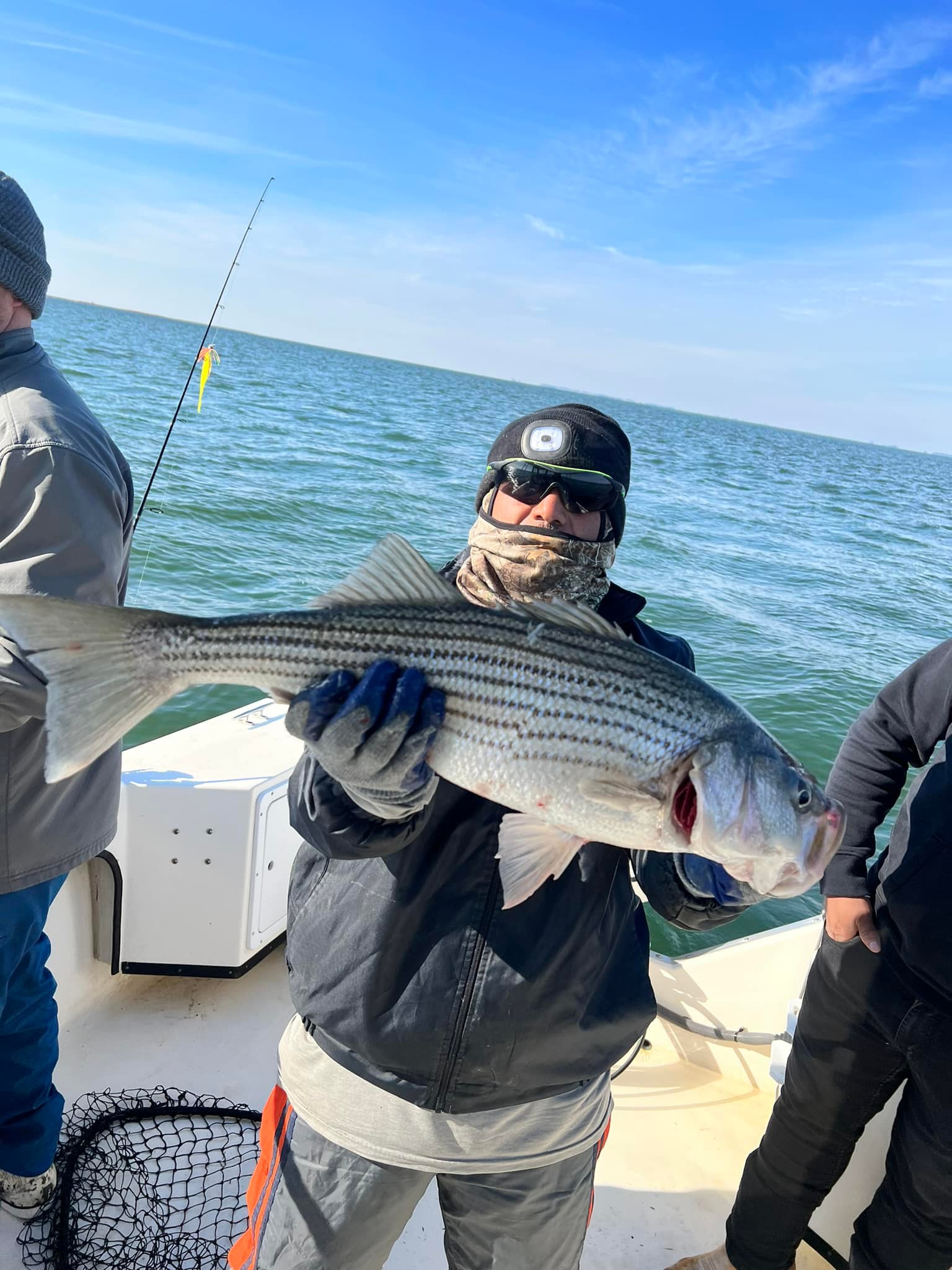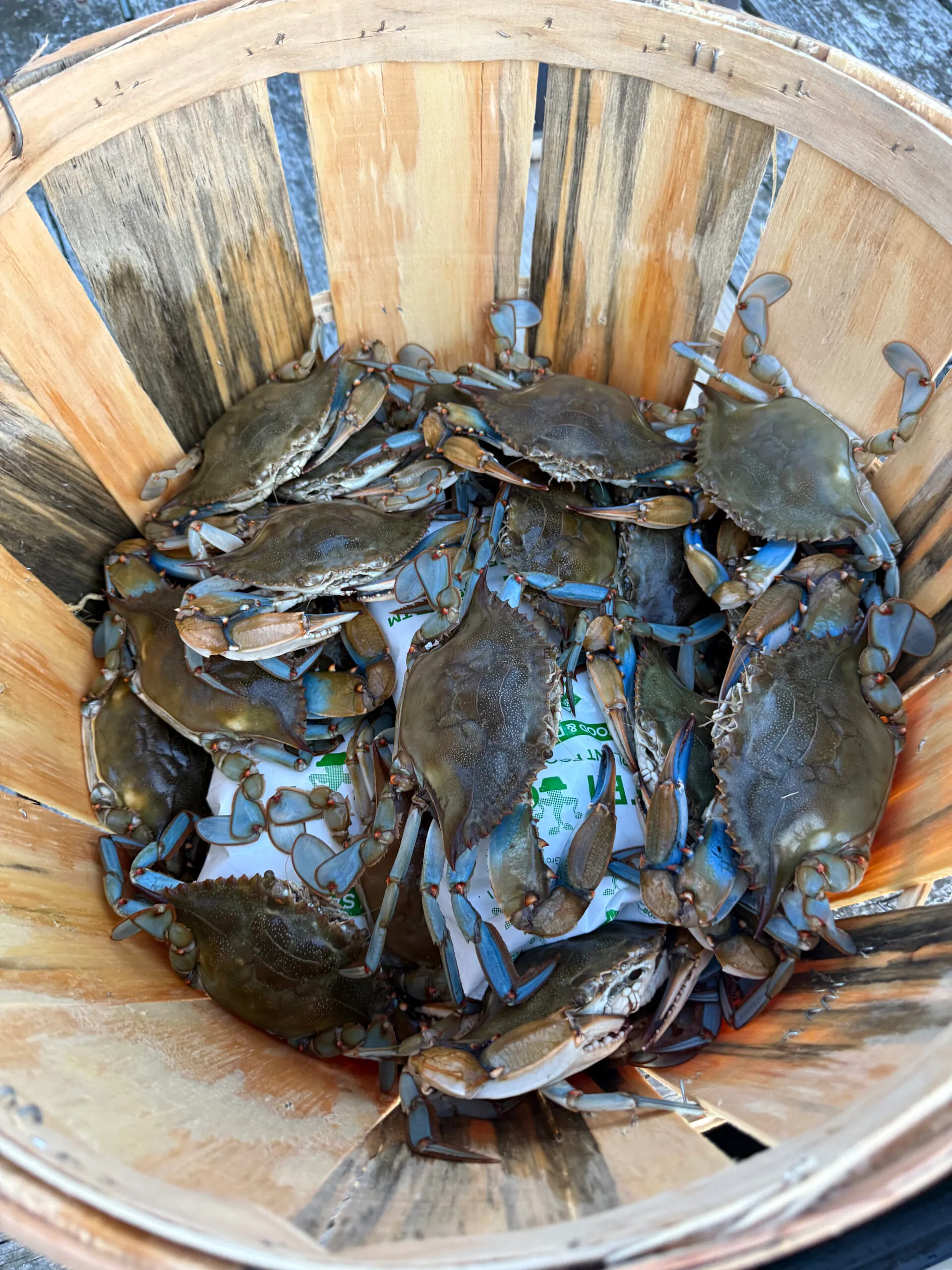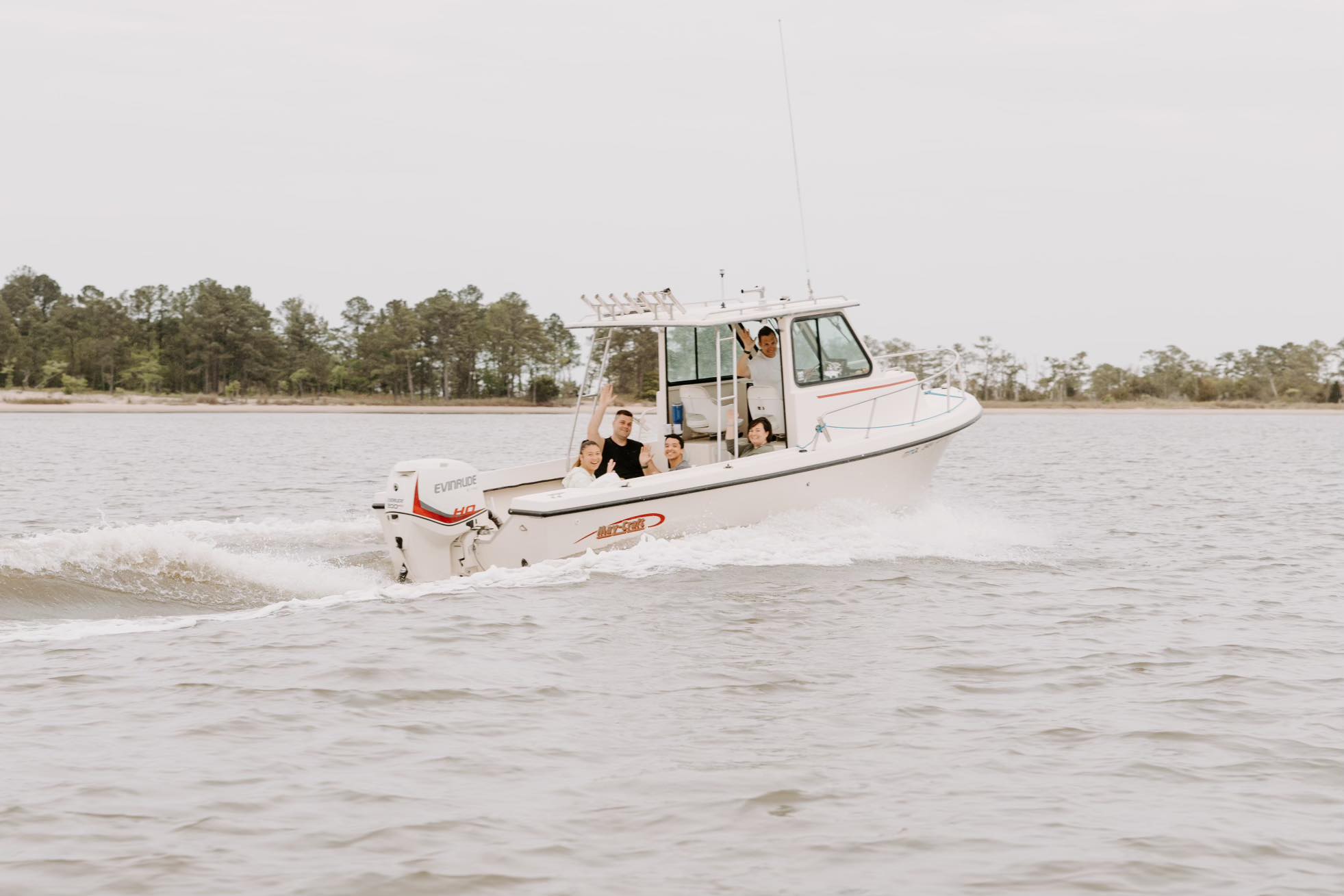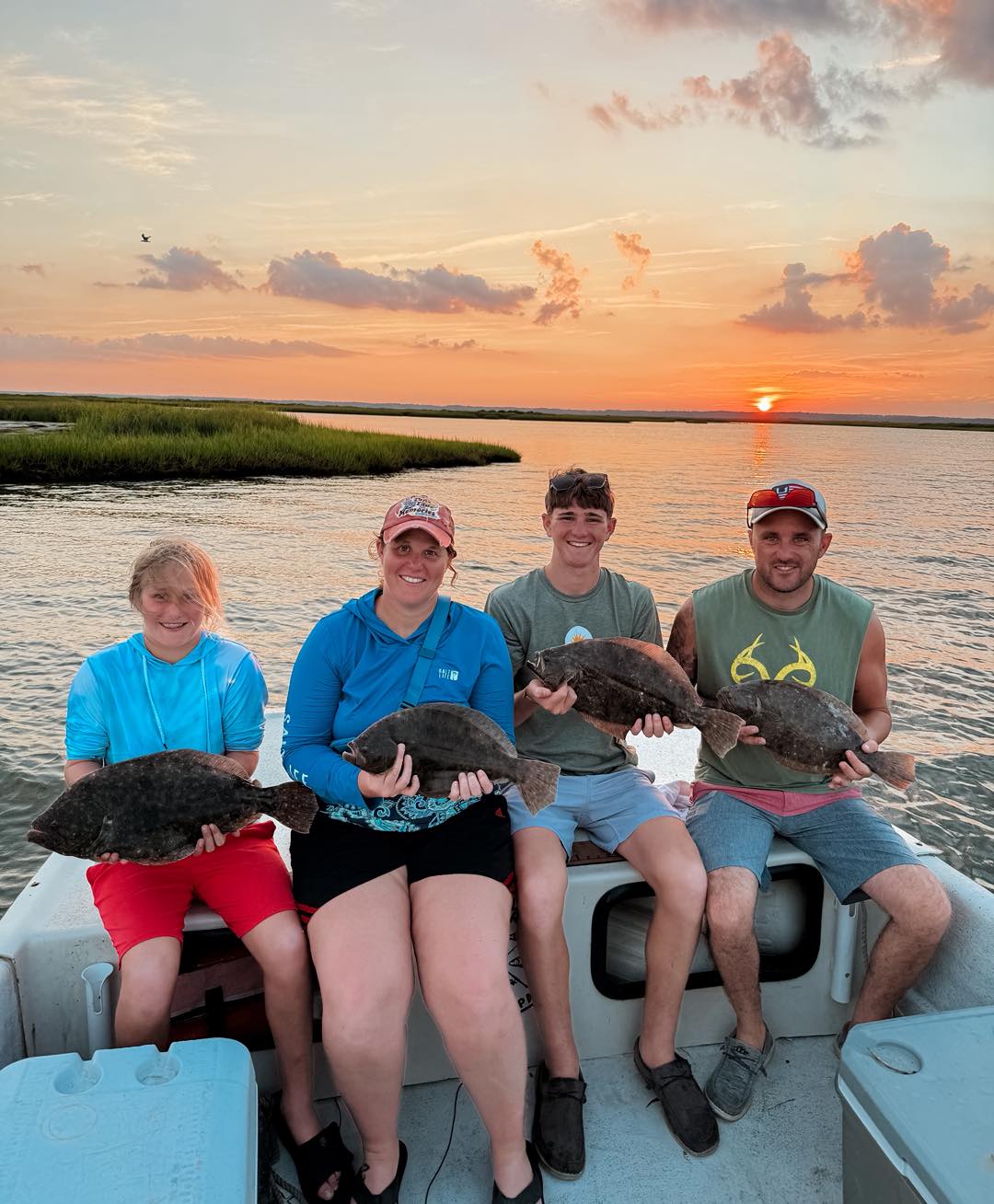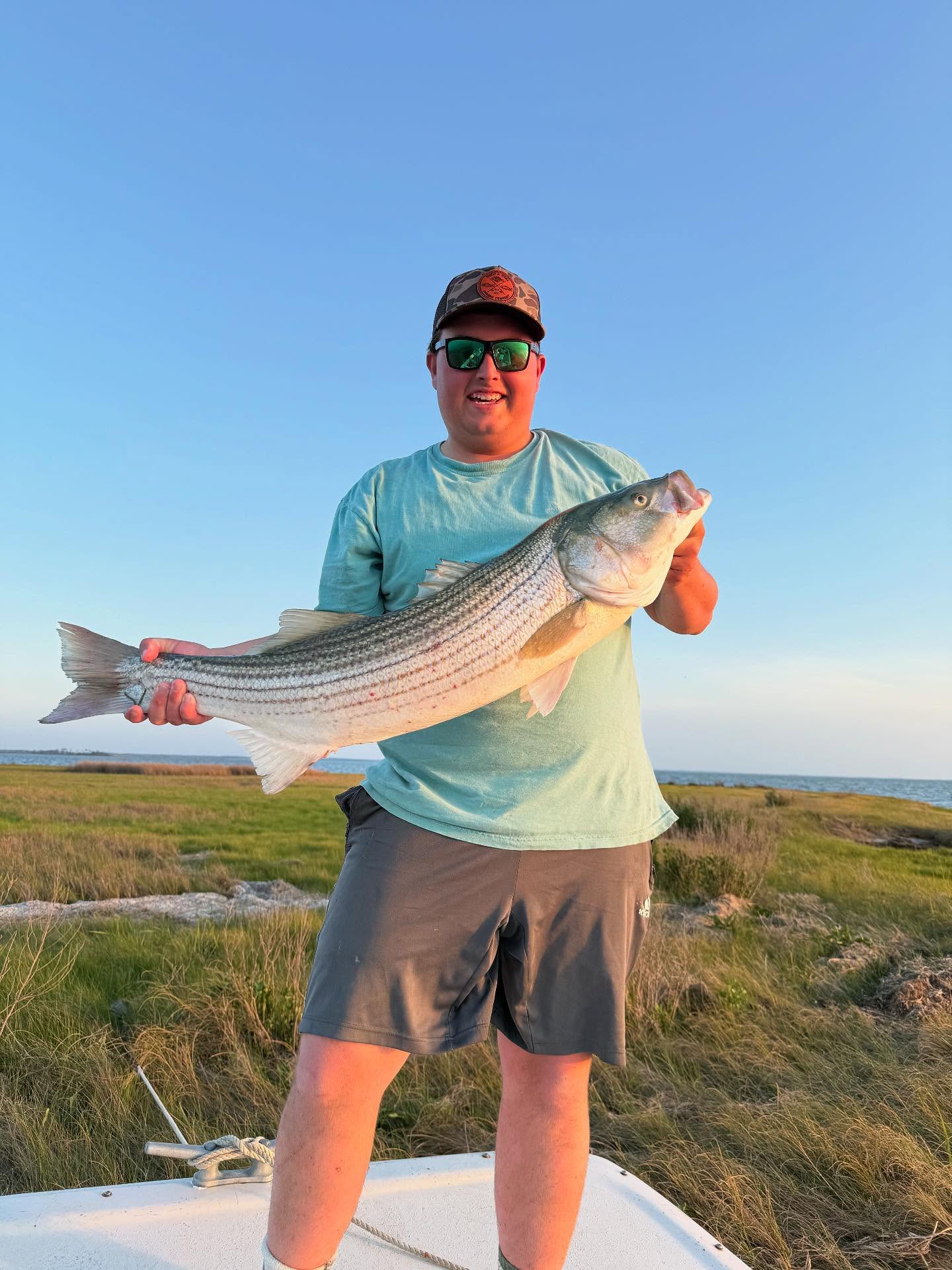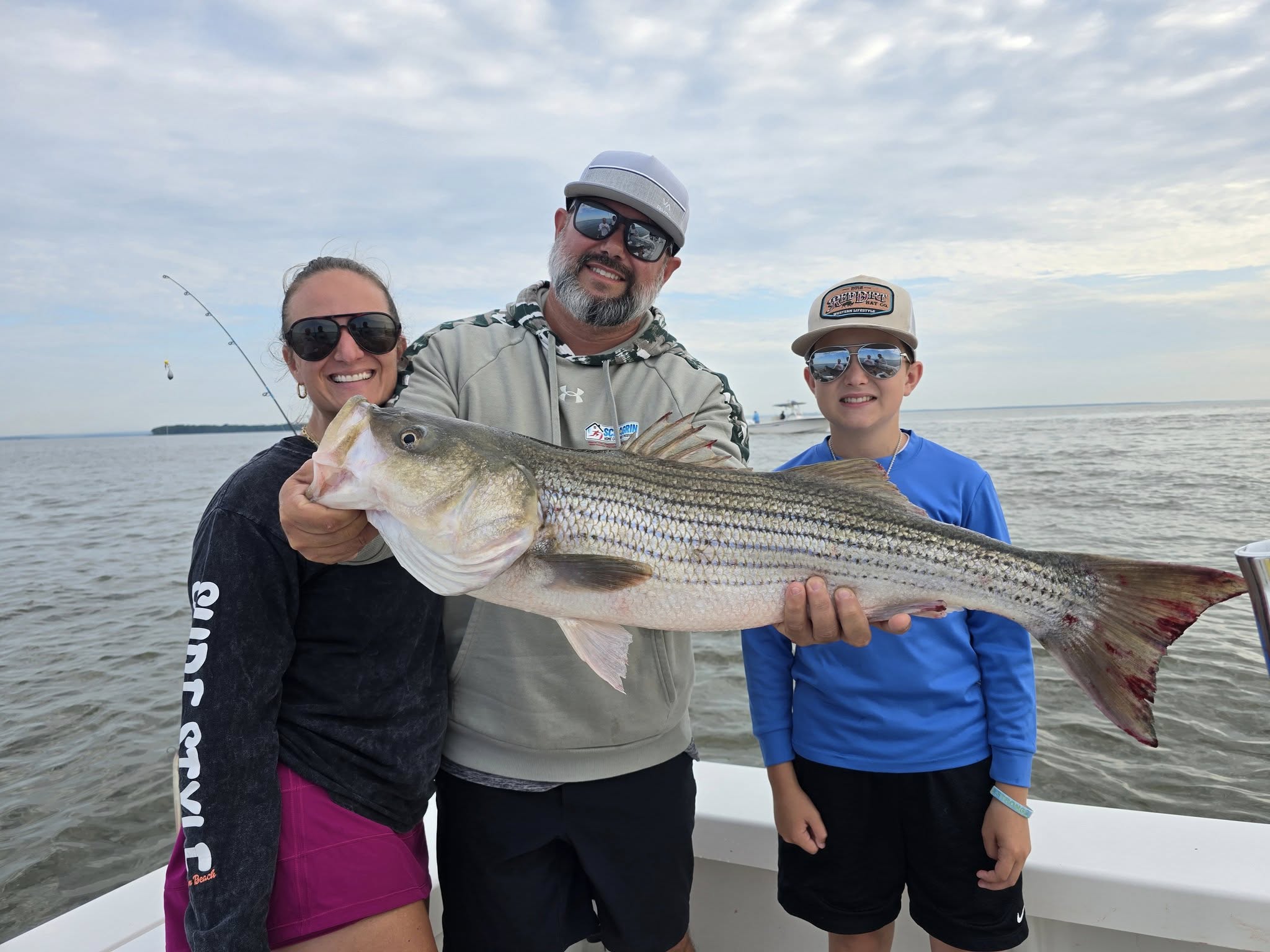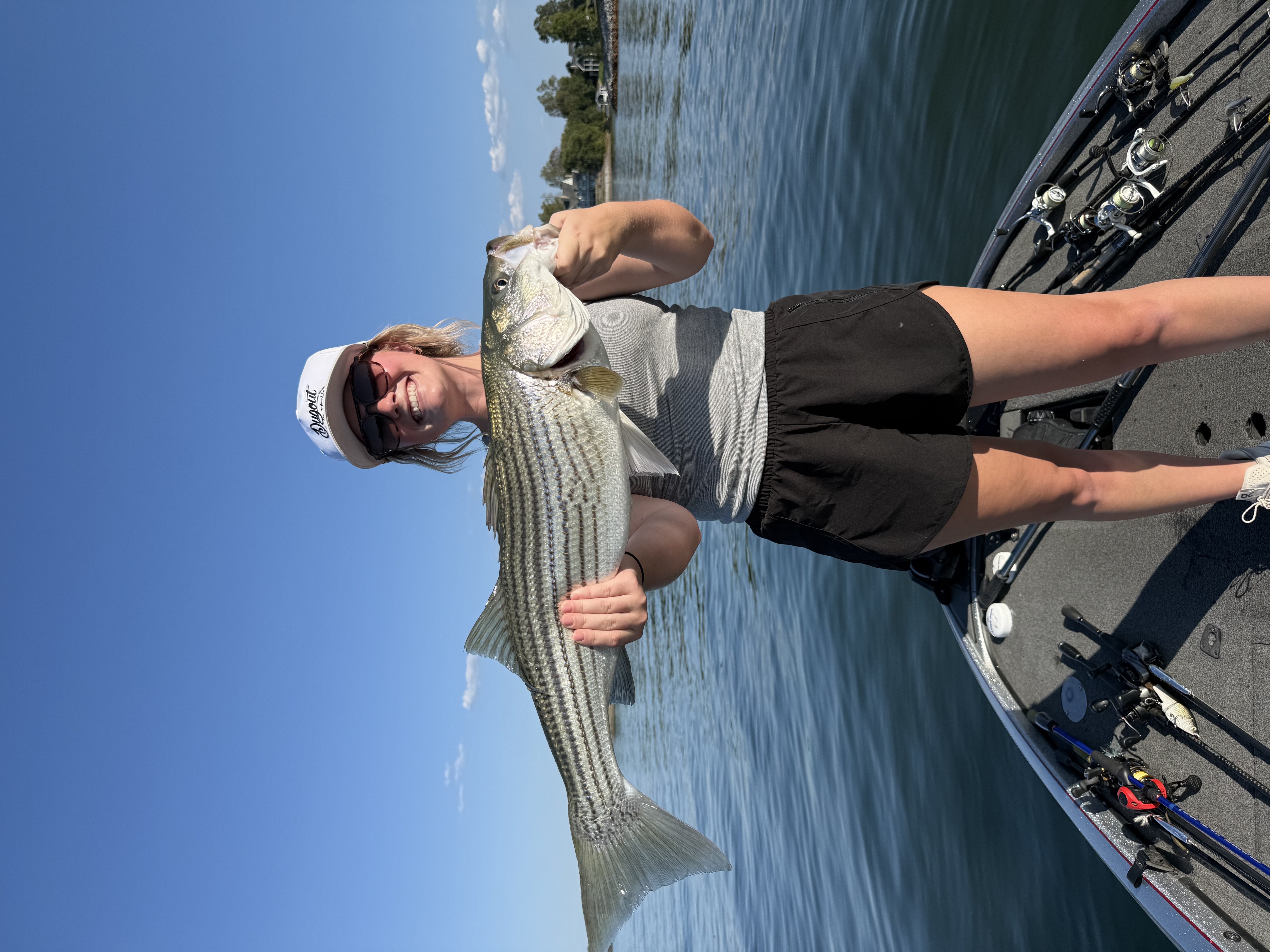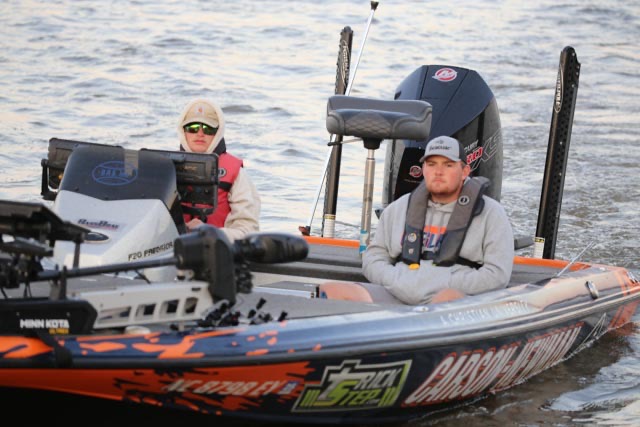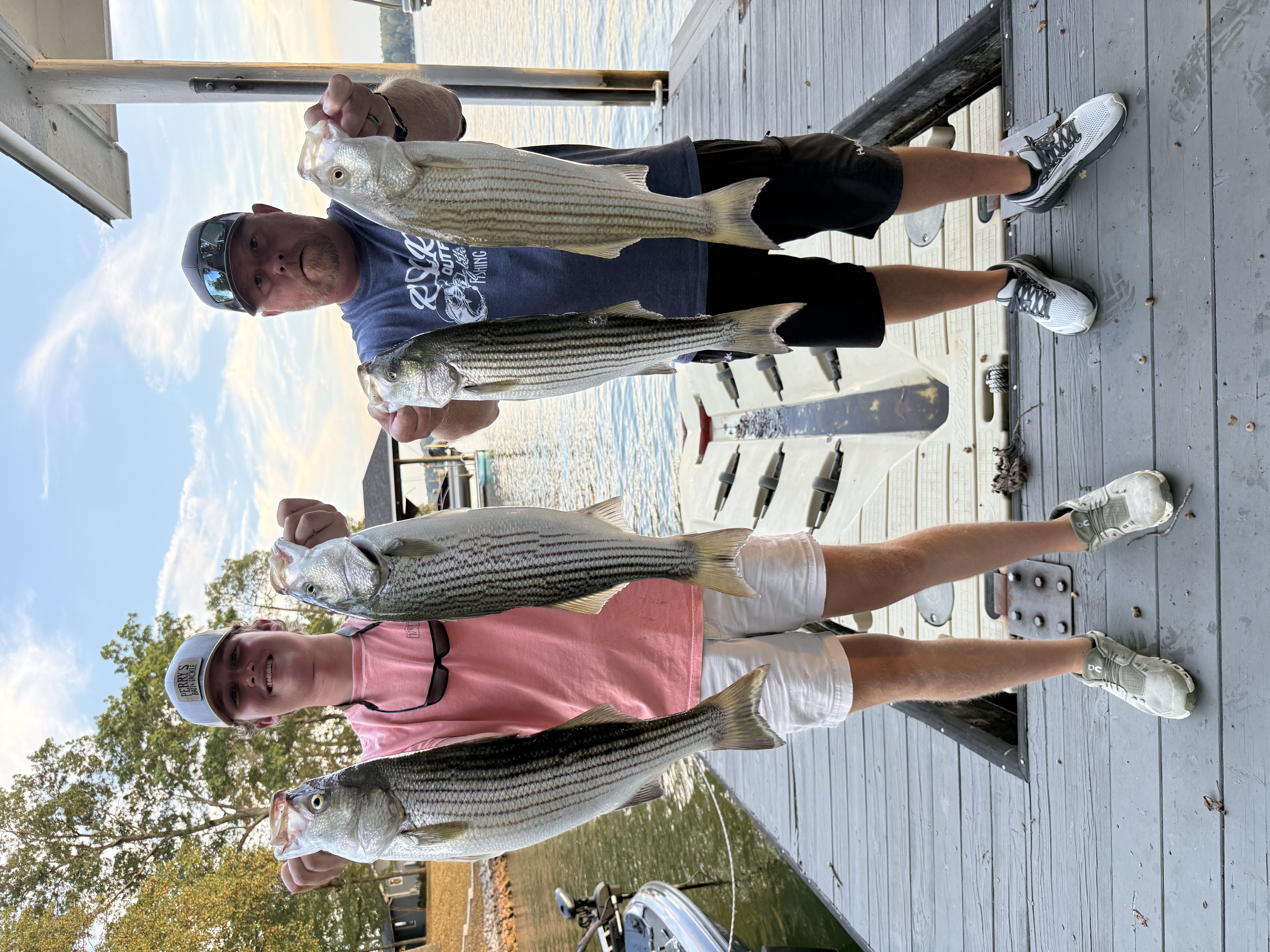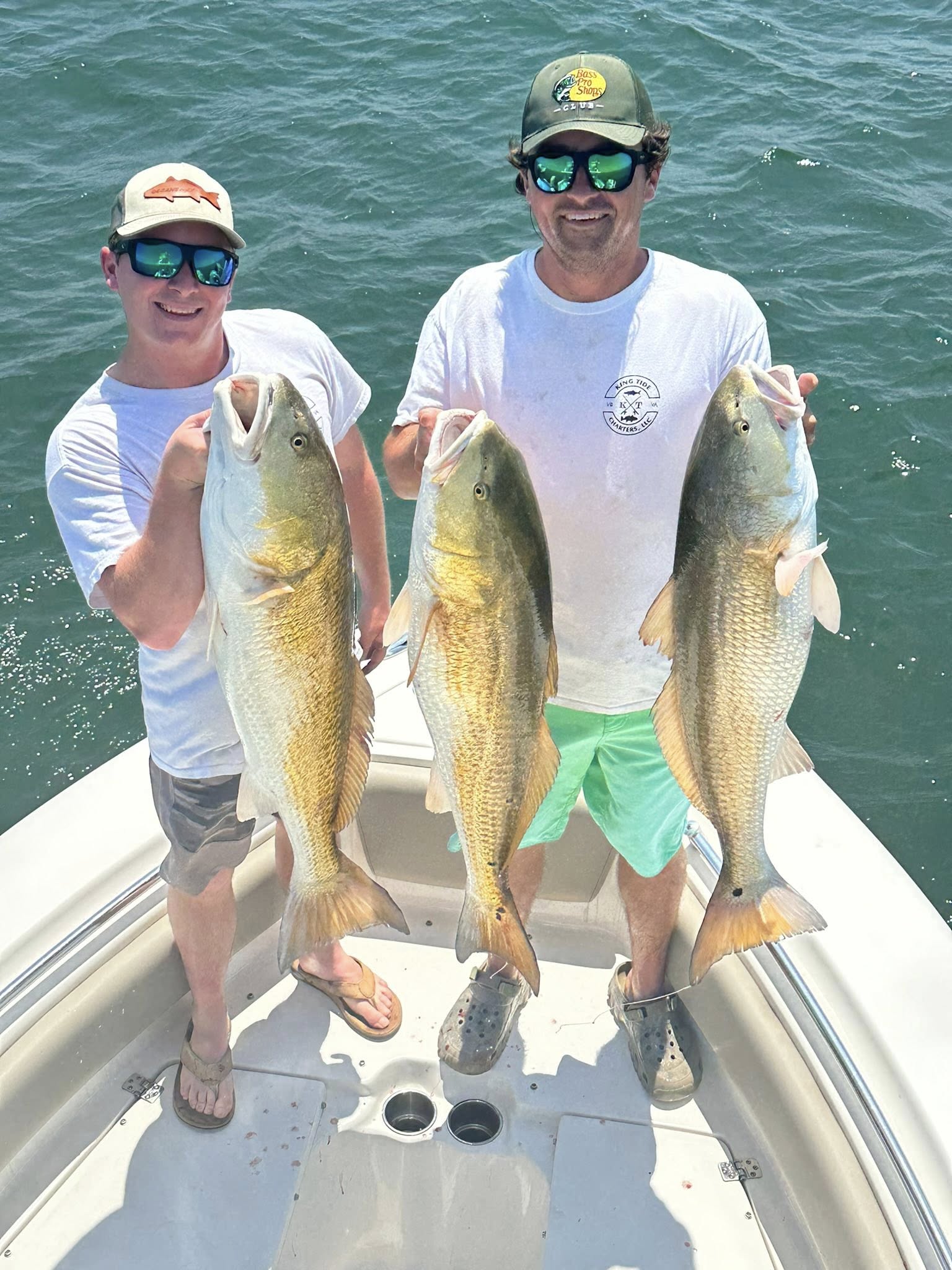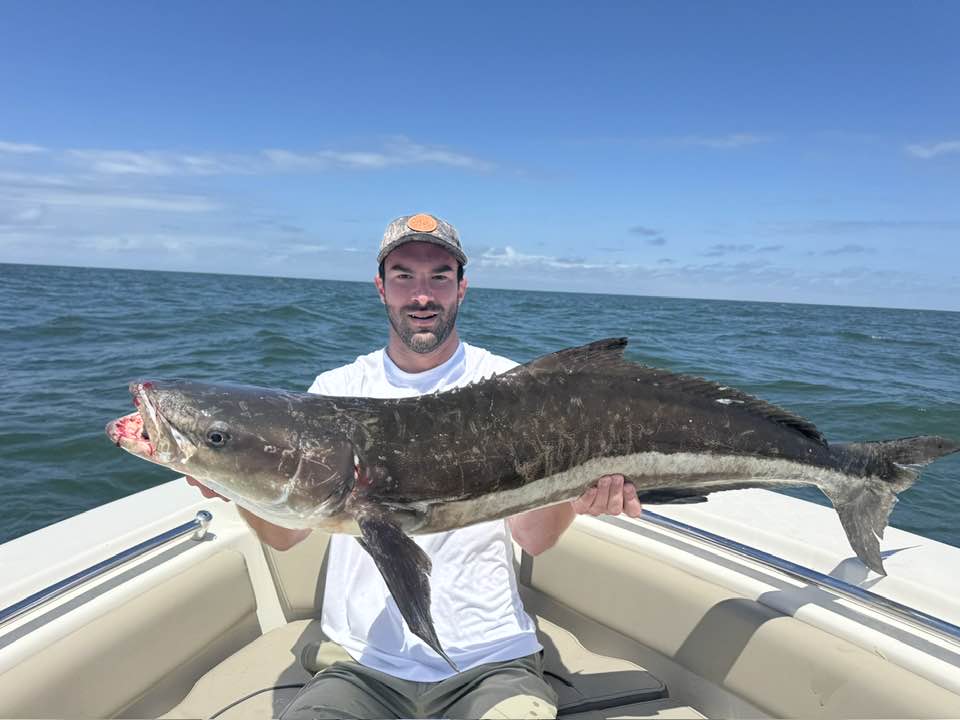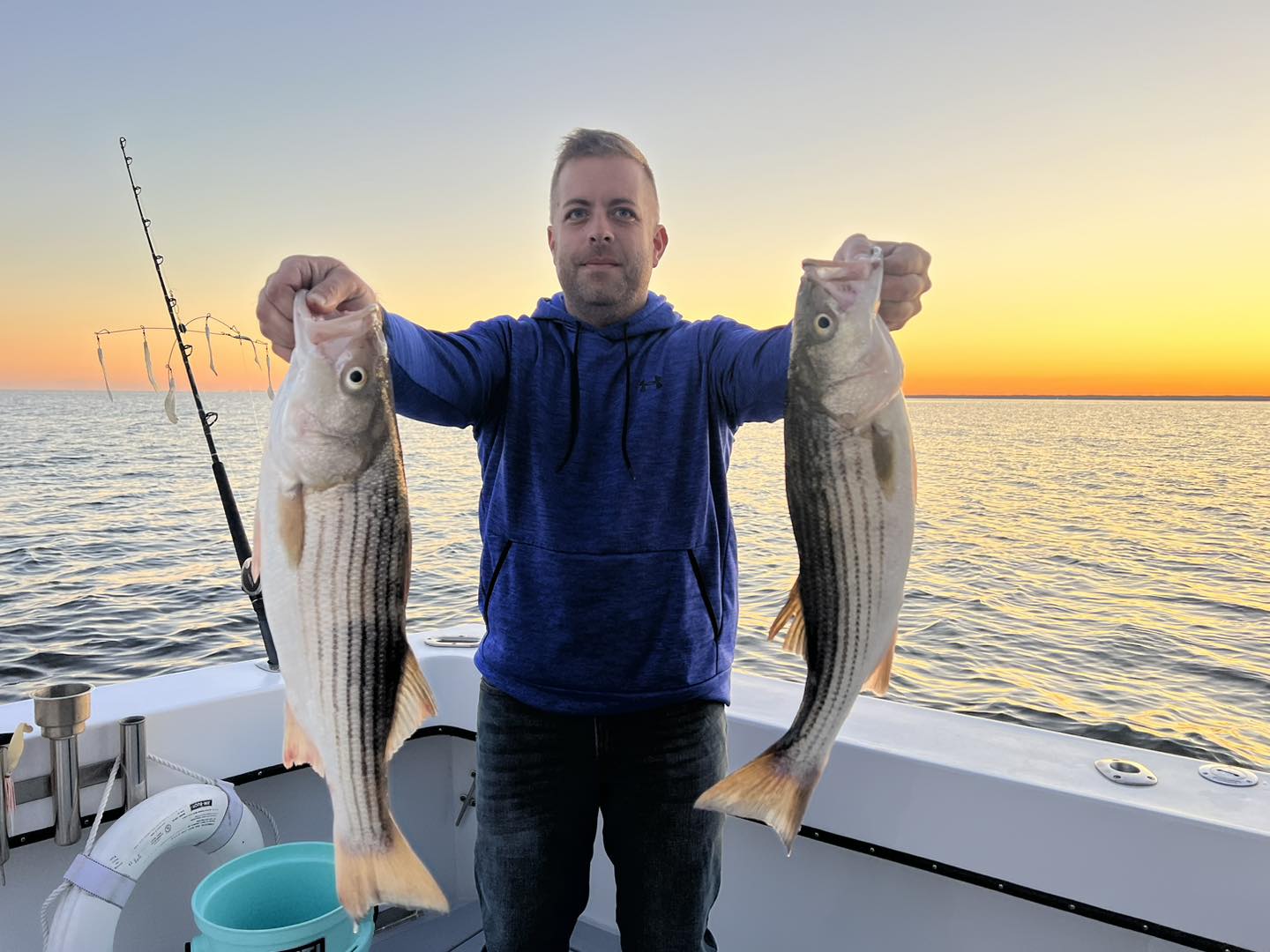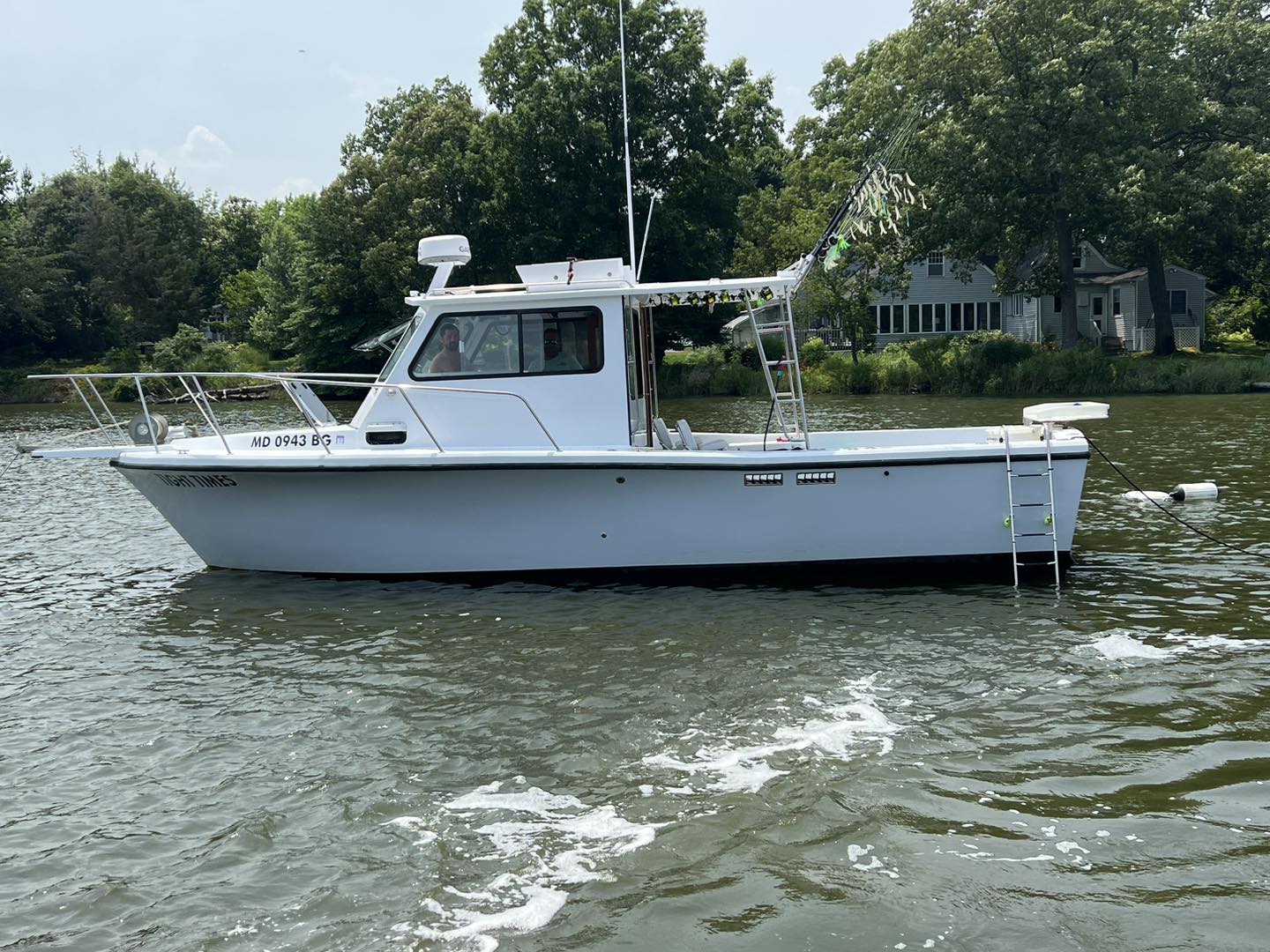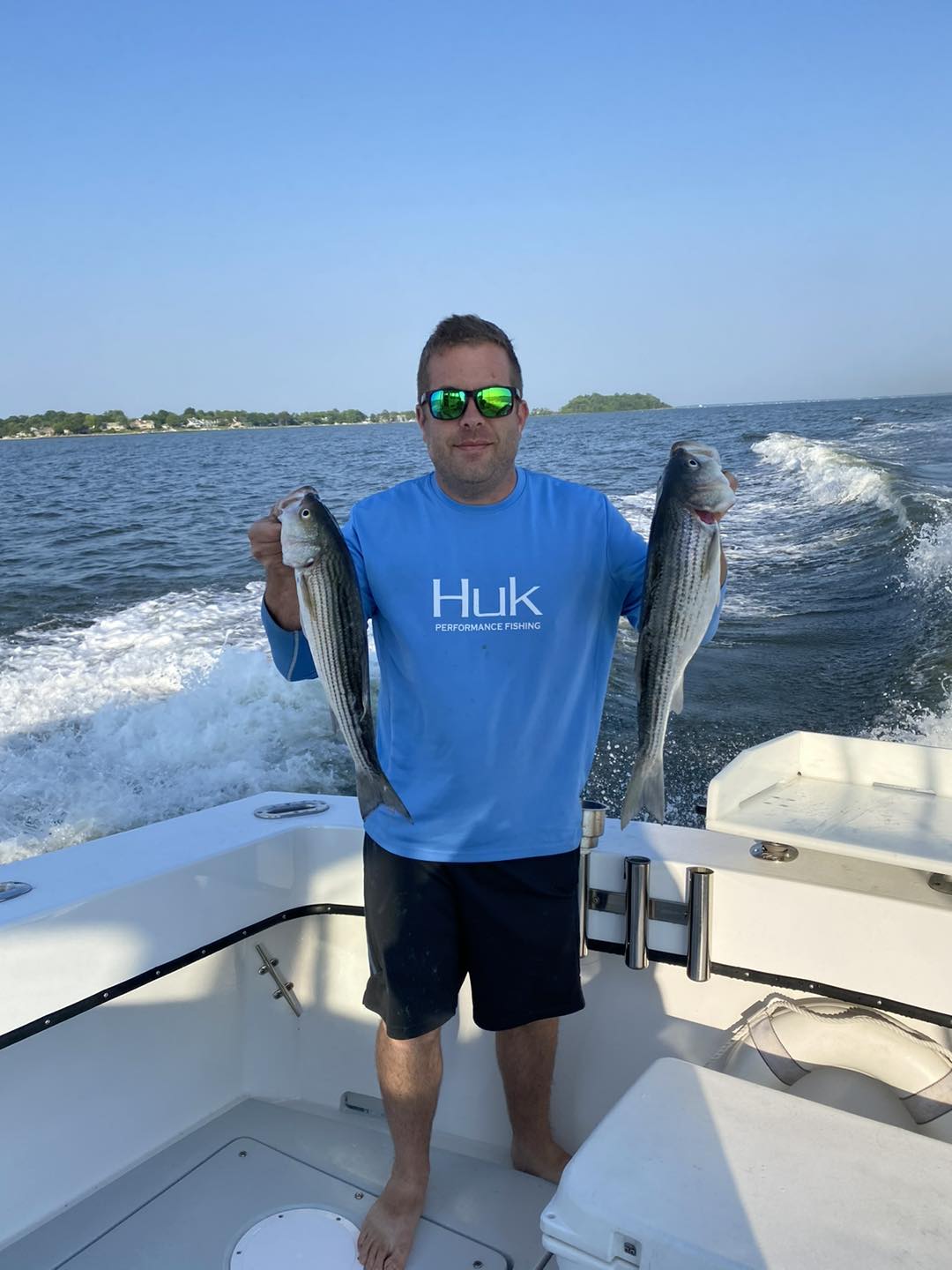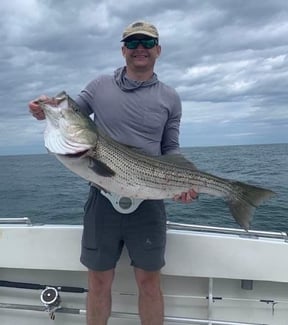Winter Speckled Trout
Inshore, Nearshore Fishing in Clinton
5HR Trip AM
Striper Fishing
Inshore, Flats Fishing in Nanticoke
4-6 Hour Inshore Trip
Inshore, Flats, Eco Tour in Nanticoke
Crabbing And Casting Adventure!
Inshore, Nearshore, Flats in Chincoteague
Chincoteage Trips
Inshore, Nearshore, River in Middle River
Half Day Light Tackle
Stripers On Badin
Inshore Fishing in Virginia Beach
Virginia Beach Inshore Fishing
6 Hour Inshore Trip
We started Captain Experiences to make it easy to book fishing and hunting guides around the world. With over 2,000 Damn Good Guides, our platform makes finding and booking a trip seamless. Head here to check out our trips.
What’s a Striped Bass or Rockfish?
Striped bass are an anadromous fish with a streamlined, silver body that is marked with longitudinal stripes that start at their gills and run to the base of their tail. As an anadromous fish, striped bass can live in freshwater or saltwater similar to rainbow trout, which are called steelhead when they travel to saltwater. The average size of a striped bass is 10 to 30 pounds and 20 to 35 inches long, but they can grow much bigger over the course of their 30 year lifespan.
Striped Bass Fishing
Striped bass, or rockfish as they are sometimes called, are one of the most popular game fish in the United States. These bass can grow huge and challenge anglers, making them fun to catch. Properly prepared filets of striped bass are light, flaky, and delicious white meat which adds to their popularity.
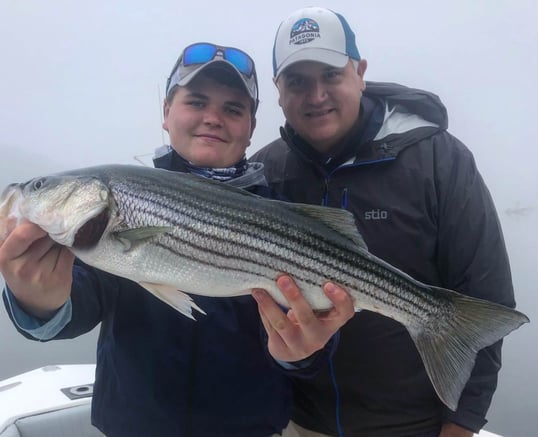
Where Did Striper Fishing Start
Striped Bass are native to the Atlantic and Gulf Coast of the United States. Over the years, habitat degradation and overfishing led to a population crash in The Gulf of Mexico. The Atlantic populations of striper have always been popular and the fishing culture has revolved around these fish for hundreds of years. Some of the first European settlers wrote about their experiences with striper and described them as abundant.
Striped Bass In The Pacific
More than 200 years after the first settlers arrived in America, striper were transported to the West Coast at the request of California State officials in 1879. The United States Fish Commission transported live striper by train from New Jersey to San Francisco Bay. The fish were moved in wooden barrels across the country where they were introduced to the Pacific Ocean which would go on to become one of the top sportfish in the state. Today striper are found in the pacific from Canada to Mexico and all the rivers that end on the West Coast.
Freshwater Striped Bass
While biologists have discovered that some populations of striped bass migrate into freshwater streams and stay for extended periods of time, the introduction of striper to land-locked bodies of water mark the beginning of freshwater striper fishing. Throughout the 1900s, striper were take from the Atlantic and introduced to various lakes across the country. One of the first states to introduce striper to their waters was Arkansas in 1954. Texas and Oklahoma were quick to follow introducing striper to Lake Texoma in the 1960s. While striper are able to live in freshwater lakes, spawning conditions are usually not suitable to maintain a population without stocking. Lake Texoma is the only lake with a self sustaining population of striped bass.
Striped Bass Distribution Summary
Striper are found on the Atlantic Coast, from Nova Scotia to Florida, but are most popular north of the Carolinas. These fish live their entire lives in the ocean and only enter the freshwater rivers to spawn. Striper have been introduced to the Pacific Coast as well and can now be found from Canada to Mexico. In freshwater, they stretch from Canada to the Mississippi, as well as from coast to coast in various lakes and reservoirs where they have been introduced.
Joey Butrus
Updated on July 31, 2023

May 13, 2024
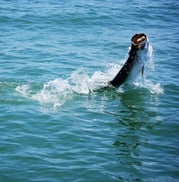
April 15, 2022

April 26, 2022

January 7, 2022

June 28, 2023
Related Articles
September 13, 2019
August 1, 2022
January 27, 2021
Featured Locations
- Fishing Charters Near Me
- Austin Fishing Guides
- Biloxi Fishing Charters
- Bradenton Fishing Charters
- Cabo San Lucas Fishing Charters
- Cancun Fishing Charters
- Cape Coral Fishing Charters
- Charleston Fishing Charters
- Clearwater Fishing Charters
- Corpus Christi Fishing Charters
- Crystal River Fishing Charters
- Dauphin Island Fishing Charters
- Daytona Beach Fishing Charters
- Destin Fishing Charters
- Fort Lauderdale Fishing Charters
- Fort Myers Fishing Charters
- Fort Walton Beach Fishing Charters
- Galveston Fishing Charters
- Gulf Shores Fishing Charters
- Hatteras Fishing Charters
- Hilton Head Fishing Charters
- Islamorada Fishing Charters
- Jacksonville Fishing Charters
- Jupiter Fishing Charters
- Key Largo Fishing Charters
- Key West Fishing Charters
- Kona Fishing Charters
- Lakeside Marblehead Fishing Charters
- Marathon Fishing Charters
- Marco Island Fishing Charters
- Miami Fishing Charters
- Montauk Fishing Charters
- Morehead City Fishing Charters
- Naples Fishing Charters
- New Orleans Fishing Charters
- New Smyrna Beach Fishing Charters
- Ocean City Fishing Charters
- Orange Beach Fishing Charters
- Panama City Beach Fishing Charters
- Pensacola Fishing Charters
- Pompano Beach Fishing Charters
- Port Aransas Fishing Charters
- Port Orange Fishing Charters
- Rockport Fishing Charters
- San Diego Fishing Charters
- San Juan Fishing Charters
- Sarasota Fishing Charters
- South Padre Island Fishing Charters
- St. Augustine Fishing Charters
- St. Petersburg Fishing Charters
- Tampa Fishing Charters
- Tarpon Springs Fishing Charters
- Venice Fishing Charters
- Virginia Beach Fishing Charters
- West Palm Beach Fishing Charters
- Wilmington Fishing Charters
- Wrightsville Beach Fishing Charters
